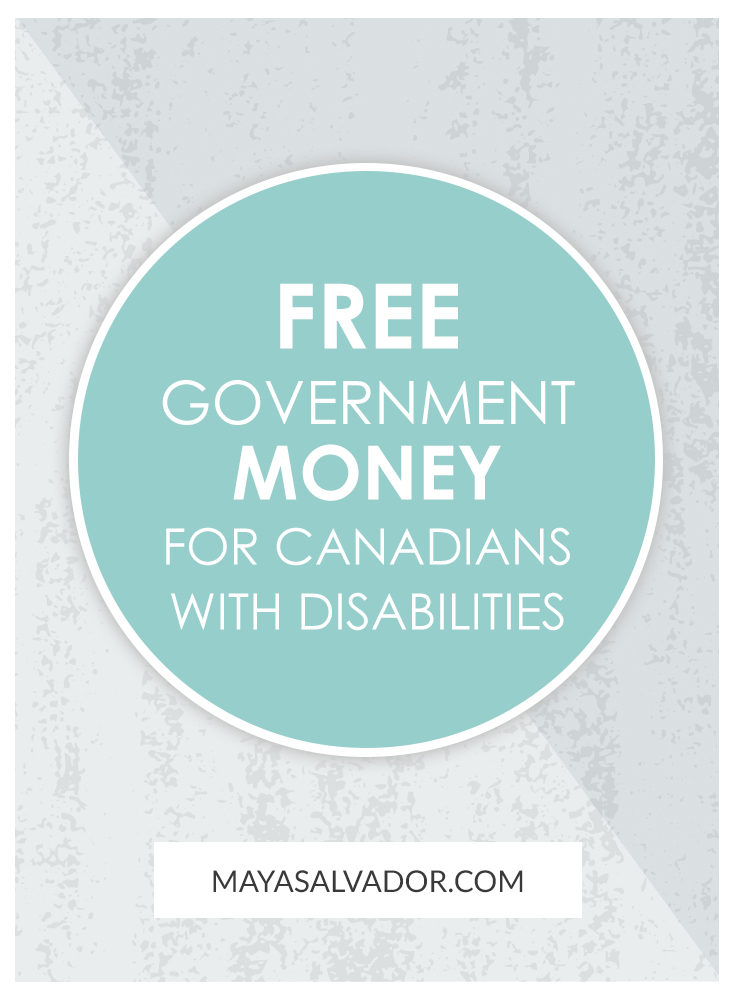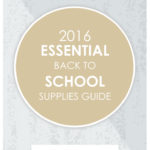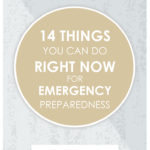
** This article has been expanded and updated. It was originally published on my previous blog, YouCanLevelUp **
Free government money? For real. It’s free. It’s the Registered Disability Savings Plan (RDSP). And unfortunately, there are Canadians who are not taking advantage of the program.
As a parent of children with disabilities, one of my greatest concerns is their independence. It’s vital that my children have a safety net and as few obstacles as possible. Accessibility to education and other life goals are just as important.
Planning ahead
Although I work with my children on life skills and problem-solving, I know it’s not enough. Another key to their independence is finances.
This is where the Canadian RDSP comes in.
The Registered Disability Savings Plan enables disabled individuals to have a brighter financial future. It provides a safety net when their parents or caregivers are no longer able to care for them.
What is the Registered Disability Savings Plan?
The Registered Disability Savings Plan (RDSP) is a long-term savings plan for Canadians with disabilities. The Government of Canada adopted this program to help individuals save money for their futures.
Since the plan became available in 2008, Canadians have opened more than 78,000 accounts. Yet, according to an article on MSN Money, “only 14 percent of 500,000 eligible Canadians have applied for this free money by opening an RDSP account.”
The savings program consists of two individual programs. The Canada Disability Savings Grant and the Canada Disability Savings Bond.
The Canada Disability Savings Grant matches the personal contributions made by the individual. The Canada Disability Savings Bond provides funds to moderate and lower income individuals.
These programs allow individuals or their family members to make non-tax-deductible contributions into their plans. They can contribute until the end of the year that the beneficiary reaches 59 years of age.
Who is eligible?
In order for an individual to be eligible to open an RDSP, they must meet the following requirements:
- individual must be 59 years of age or younger as of the 31st day of December of the current year
- must be a resident of Canada
- have a valid Social Insurance Number
- must be eligible for the Disability Tax Credit. To qualify for this credit, the individual must be markedly restricted in either hearing, feeding, dressing, speaking, walking, executing the mental functions of everyday life, life-sustaining therapy to aide vital function, cumulative effects of significant restrictions, and the elimination of bodily fluids through the bladder or bowel.
If an individual is eligible, they must apply for an RDSP through a financial institution.
About the Disability Tax Credit
Obtaining the Disability Tax Credit certificate can be difficult for some people. If your family physician is familiar with you or your child’s medical history, you shouldn’t experience any problems.
However, some people run into issues if they don’t have a regular physician or one that is not familiar with disability forms. If this happens to you, do not give up! You are entitled to certain tax breaks as well as the RDSP.
Additionally, if this is for a child, you could be missing out on the disability claim on the monthly Child Tax Credit. So get started as soon as you can. Keep in mind, the disability claim with the Child Tax Credit is only five years retroactive.
So what are your next steps?
Not all general practitioners are familiar with the disability certificate. Ask for a referral to a pediatrician or a specialist (depending on the disability). Even better, one who specializes in disabilities.
If you are not able to do so, contact your local advocacy agency. This can vary depending on where you live and what is accessible.
Some resources that may be able to help are your local mental health provider or hospital. The Canadian Association for Community Living is another agency that could assist. You can also contact agencies related to your disability. For example, if your child has Autism, you could contact your local branch of Autism Ontario.
These resources may be able to assist in a variety of ways. They may be able to help you fill out the disability certificate form. Or work with your doctor to complete the form. In the very least, they can refer you to someone who can help.
You have to keep renewing it
You need a current disability certificate to qualify for an RDSP. It may be easy getting your first disability certificate. But you may run into problems later.
The downside is that Revenue Canada expires your certificate every seven years. Even for people with permanent disabilities. Hopefully, doctors and advocates will push for this to change. In the meantime, you have to keep renewing your certificate.
For people with disabilities, it can be a hassle. And you can also incur fees from doctors for completing the forms. Be sure to prepare for this well in advance to prevent any disruptions. Revenue Canada can take approximately 6-8 weeks to process disability certificates.
So how much money can I get?
The beauty of the plan is that you don’t need to make contributions. You will still receive a $1,000 savings bond each year, as long as you continue to be eligible. This includes income level eligibility.
A family net under $24,183 is eligible for the $1,000 per year. A net income over $24,183 will result in a smaller portion of the $1,000. As long as the net income does not exceed $41,544.
If you make contributions, the Canada Disability Savings Grant will match these.
The first $500 contribution made each year will result in the government providing $1,500.
If you make a $1,000 contribution, the government will provide $2,000.
If you make a $1,500 contribution, the government will provide $3,500 every year.
The maximum lifetime benefit is $70,000.
With the Canada Disability Savings Bond, there is no annual limit. And the lifetime contribution limit is $200,000.
Anyone can contribute to the plan with written permission from the plan holder.
You can check out Revenue Canada’s RDSP Savings Calculator here.
Who can set up the plan?
The person who manages the plan is the “holder.” There is a limit of one account per qualifying individual. If the individual is under age, a parent, legal guardian, public agency or institution, or curator, may open an RDSP on their behalf.
But, once the beneficiary reaches the legal age, he or she, depending on their mental capacity, may become the holder of their own plan. And they may choose to remove the existing holder or become a joint holder.
Steps to take:
- Make sure the beneficiary has a Social Insurance Number (SIN)
- Apply for the Disability Tax Credit with the Canada Revenue Agency (a doctor will need to provide proof of disability and forms are available here.)
- File your tax returns. Canada Revenue Agency (CRA) allows individuals to claim this amount on their current income tax return, as well as up to ten years back on previous returns (for years the qualifying ailment(s) existed).
- Choose a financial institution.
- Select a plan holder.
- Open the RDSP. You will need to provide proof that the beneficiary is eligible for the Disability Tax Credit, SIN card, and the holder will also need to provide additional identification (varies by financial institution) and proof of relationship to the beneficiary (if the holder is not the beneficiary).
- Choose your investment options: Cash/Savings, GICs, and Mutual Funds.
- Apply for the Canada Disability Savings Grant and the Canada Disability Savings Bond when you open the RDSP.
A note about financial institutions
The bank you choose for the RDSP is the “issuer.” Banks can sometimes be another factor as to why some Canadians may not be enrolling in the RDSP program. You may run into issues with your financial institution. I will explain how you can resolve them.
This happened to me. Back in 2010, I made an appointment with a financial advisor to set up an RDSP for my son. The RDSP program had existed for two years already back then. When I showed up at my bank, the advisor had no idea what an RDSP was. I sat there for half an hour while she Googled it online. It took two hours of her placing calls to head office asking questions. And she had a degree in finance.
My problems didn’t end there. For various reasons, the bank continued to approve and then decline my son’s RDSP. Between the investment brokerage and the bank, there was a huge disconnect.
I realized this is a huge problem. I had everything I needed to set up my son’s RDSP. All his paperwork was in order but I was still running into problems. Over the years I applied and re-applied several times. Each time the bank promised it was sorted out, only to find out months later that it was declined again. I started to give up hope. But I wasn’t ready to let go of my son’s future nest egg.
Don’t get discouraged
Through experience, I understand why some people get discouraged with this process. I think part of the problem is that the RDSP falls under an investment product. And it’s a complex one.
But complex or not, you have a right to it. And it’s well worth the effort to fight for it if you should have to.
The RDSP is retroactive for a period of ten years (but not preceding 2008). But you are losing out on potential matching grants from the government if you have to wait. So it’s essential that you get it resolved as soon as possible. If you can’t fix it with your bank, you need to go to a resolution service.
Contact a resolution representative
Eventually, the bank escalated my issue and I received a call from the bank’s Ombudsman. Yes, every bank has an Ombudsman. He settled the matter fast and with courtesy. After so many years of wrangling, I felt a huge relief.
I don’t want my experience to discourage you. I’m sharing my story to inform you. Hopefully, the passage of time has ironed out a lot of these wrinkles.
Today, banks are more familiar with RDSPs and have programs set up. So, you most likely won’t run into this problem.
But, if you have everything required for an RDSP and your bank declines you, then contact your bank’s Ombudsman. Don’t waste precious time like I did. If I had known such a thing existed I wouldn’t have either.
If you are having a dispute with your bank, you can find resolution services from the following links:
Canadian Bankers Association – contains a list of contact information for the Ombudsman for every major bank.
Ombudsman for Banking Services and Investments
On the wish list
Another caveat with the RDSP is the lack of automatic payments. If you choose to contribute to the RDSP you need to do so in person. I’m not sure if this is just with my bank or all the banks, but it’s another thing to think about.
All my other investments are set up with automatic monthly contributions. Even my children’s RESPs. I love the set it and forget it aspect of this. Unfortunately, I’m not able to do so with the RDSP. I’m hoping this will change in the future as well. Something else for banks to take note of.
Moving forward
If you weren’t familiar with the RDSP program, I hope this will give you some basic information.
Since I registered my son’s RDSP when it was in its early stages, I experienced some of the growing pains. But I hope you can avoid some of these by learning from my experience.
For detailed information on the RDSP, you can check out the following links at RDSP – Canada Revenue Agency and Plan RDSP.
Do you or your child have an RDSP? What have you learned or could recommend helping others? Let me know in the comments below!







